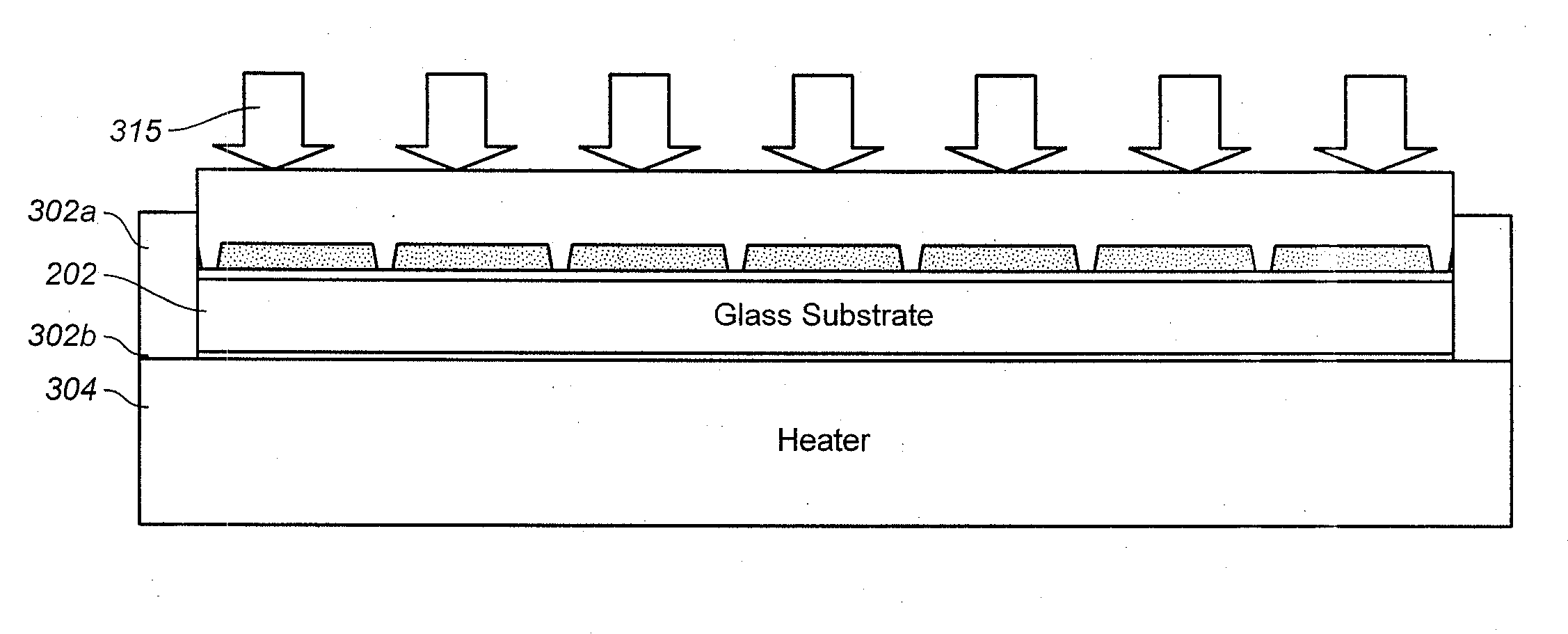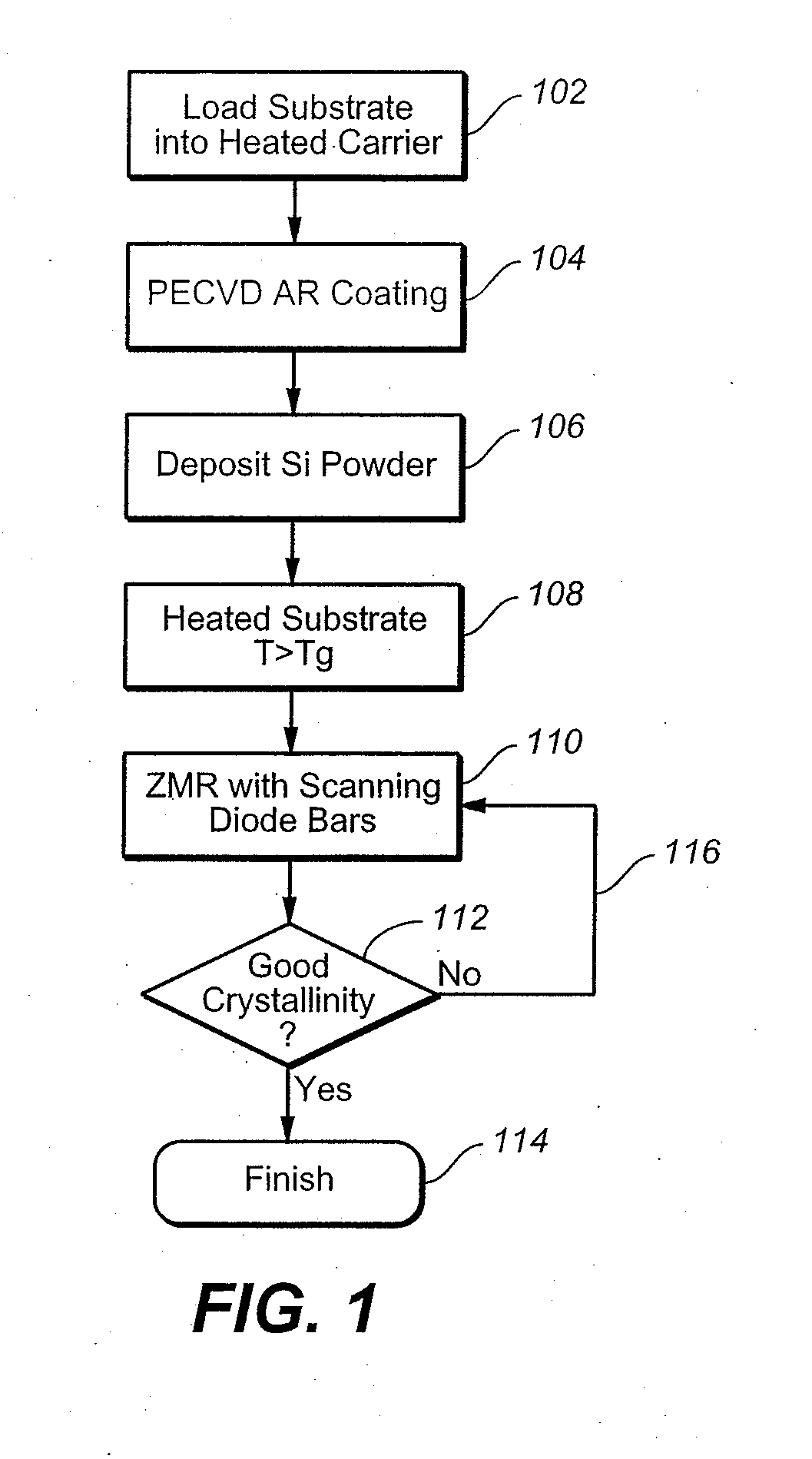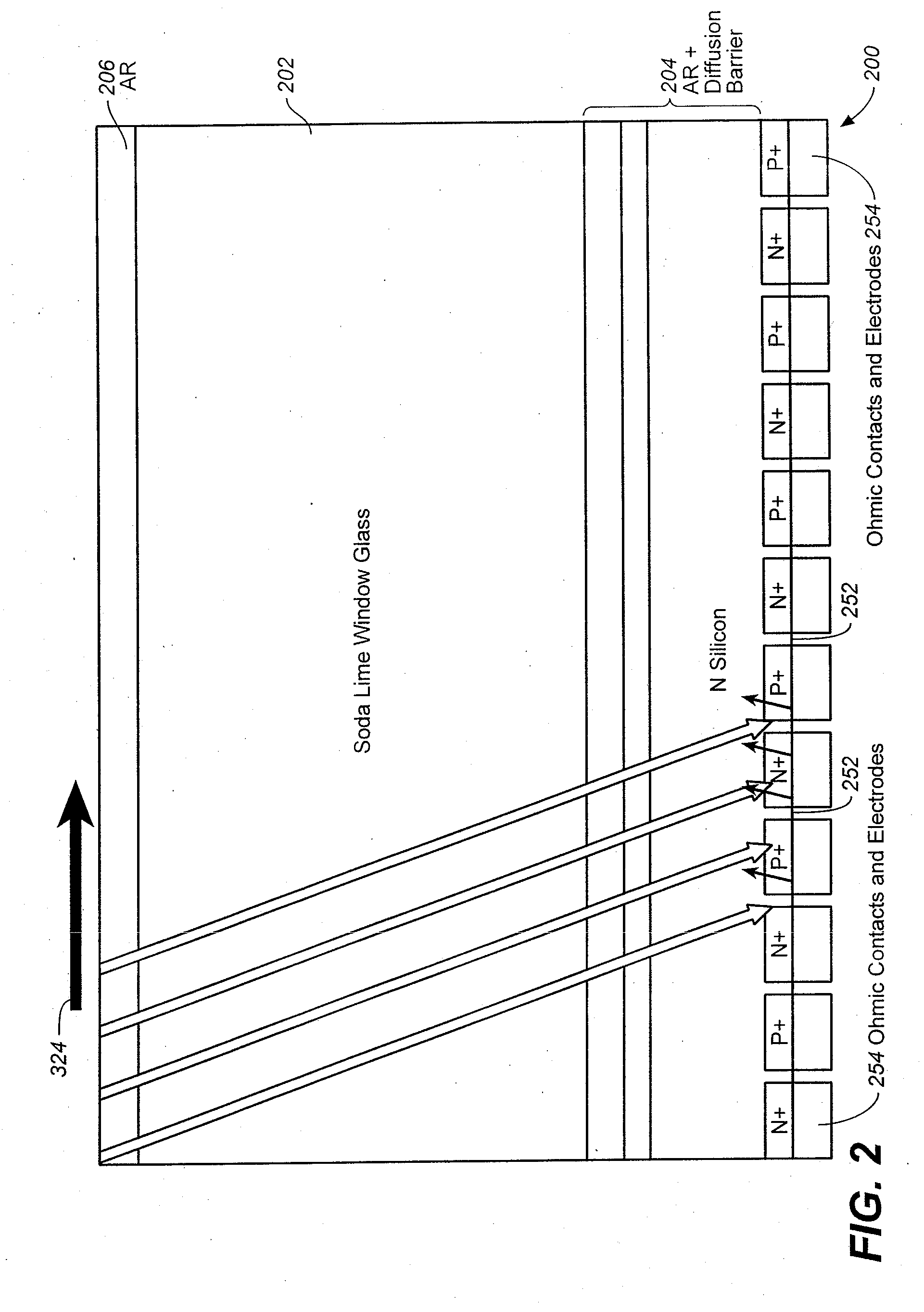Thick Crystalline Silicon Film On Large Substrates for Solar Applications
a technology of thin crystalline silicon and solar energy, which is applied in the direction of crystal growth process, sustainable manufacturing/processing, final product manufacturing, etc., can solve the problems of high raw material cost, high cost of harvesting, and high cost of raw materials
- Summary
- Abstract
- Description
- Claims
- Application Information
AI Technical Summary
Benefits of technology
Problems solved by technology
Method used
Image
Examples
Embodiment Construction
[0029]This invention discloses processes of making low cost, large scale, and high purity thick crystalline silicon film for solar cell. Thick silicon films (over 5 μm) are made on low temperature substrate. Soda lime glass (that is glass used in windows used in window of residential and commercial buildings) is of low cost and is widely available. A new process is used that combines substrate preparation, temperature control, use of silicon powder materials, and laser annealing to observe silicon thick films that is substantially crystalline. A schematic of the process flow is shown in FIG. 1.
[0030]A substrate is prepared and loaded onto a carrier (block 102). An anti-reflection (AR) coating is formed using the PECVD process (block 104). Silicon powder is then dispersed onto the AR coating (block 106). The carrier, substrate and the carrier are then heated to a temperature (e.g. 600° C.) greater than the softening point of the material of the substrate causing the substrate to soft...
PUM
 Login to View More
Login to View More Abstract
Description
Claims
Application Information
 Login to View More
Login to View More - R&D
- Intellectual Property
- Life Sciences
- Materials
- Tech Scout
- Unparalleled Data Quality
- Higher Quality Content
- 60% Fewer Hallucinations
Browse by: Latest US Patents, China's latest patents, Technical Efficacy Thesaurus, Application Domain, Technology Topic, Popular Technical Reports.
© 2025 PatSnap. All rights reserved.Legal|Privacy policy|Modern Slavery Act Transparency Statement|Sitemap|About US| Contact US: help@patsnap.com



